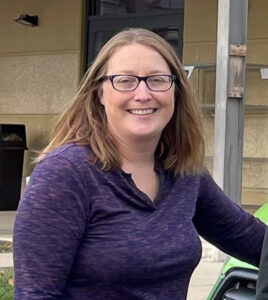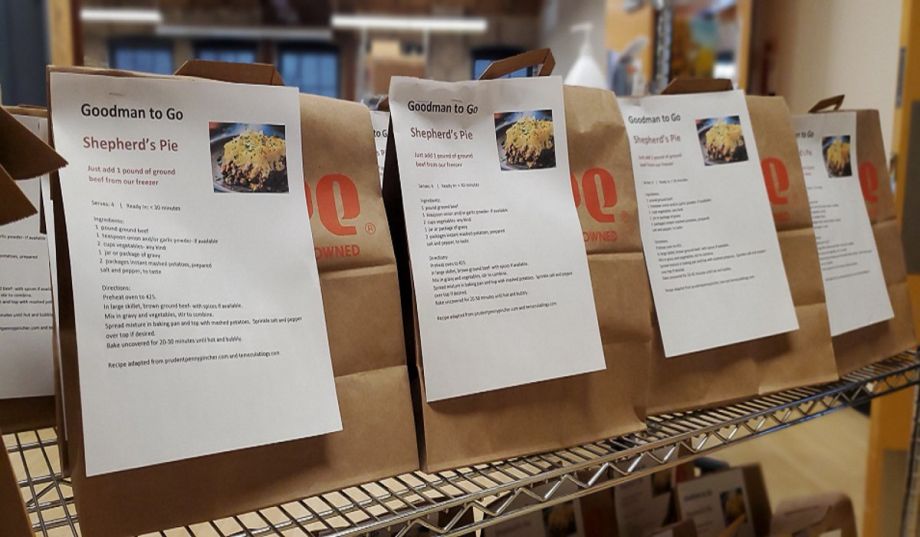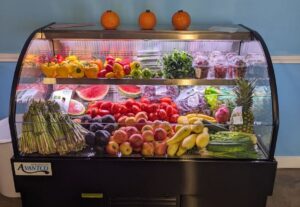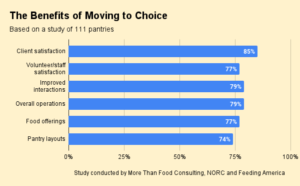Taking a page from meal kit services like Blue Apron and HelloFresh, some hunger relief organizations are making basic versions of the kits available to clients. The kits fulfill multiple roles, offering variety and convenience to clients, as well as a novel engagement experience for volunteers.
The bare-bones meal kits generally contain canned goods and shelf-stable products, and are intended to provide at least one meal without any additional purchases or ingredients. Usually, recipes are provided.
Harvesters, a food bank and hunger relief organization based in Kansas City, considers its Healthy Family Meal Kits to be a volunteer engagement strategy. “We offer this opportunity when groups are looking for a unique opportunity, such as for team-building, and for times when all our volunteer slots are full for specific sessions,” said Paula Pratt, Harvester’s Director of Community Engagement.
Harvesters distributes several thousand Healthy Family Meal Kits throughout the year. It also puts together holiday boxes along the same lines, and expects to pack and send out about 20,000 this holiday season.

Volunteers bring all the necessary ingredients, and then pack them into bags. So even though the meal kits are more expensive than traditional distributions, the expense rests on supporters.
The meal kits themselves go into the food bank’s general inventory, except for a set amount that goes into additional programs focused on non-traditional partners, such as libraries or hospitals. “From the feedback we are receiving from our agency partners, the products are well received by neighbors,” Pratt said.
Hospitals are an important distribution partner for Operation Food Search in St. Louis, Mo., another food bank that produces meal kits. Chief Program Officer Melissa Weissler said that the meal kit program spun off from an existing school program offering shelf-stable meals for kids to take home on the weekends. “They have a family, right?” she said. “So the idea of providing them with an entire meal to feed whoever is living in a household is how it started.”
The meal kits provide a way for Operation Food Search’s partners to offer immediate nutrition assistance to clients. In the case of hospitals, having meal kits on hand can help mitigate hunger while patients navigate the slow process of becoming connected to food assistance. “When [a hospital] has a patient who presents as food insecure, they’re at least able to provide them with one thing that’s tangible,” Weissler said.
Like Harvesters, Operation Food Search said that meal kits are a “great way to utilize the enthusiasm of volunteers.” If there is a downside to the approach, she added, it would be the creativity required to create recipes using only canned or shelf-stable goods.
In February, the UT Southwestern Medical Center released the results of a study conducted with Dallas-based pantry Crossroads Community Services, which operates as a client-choice pantry. During the course of the study, 66 clients were randomly assigned either meal kits or frozen pre-made meals. At the end, the team distributed surveys, and found that most participants preferred the meal kits over the pre-made meals.
The idea for the meal kits at Crossroads actually came from UT Southwestern researcher Kelseanna Hollis-Hansen, who approached the pantry with the idea. While both options improved self-reported food security and perceived diet quality among participants, the meal kits had higher satisfaction ratings. “Generally, we heard from people that they liked them more,” Hollis-Hansen said.
Meal kits offer a way for clients to more easily put together meals that are nutritionally sound for their families, said Crossroads President & CEO, Benaye Wadkins Chambers. “It’s the born concept of everybody knows how to cook and everybody knows how to create a healthy meal,” she said. “That is not actually true.”

Going forward, Crossroads and the UT Southwestern are planning on partnering on another study. Crossroads also plans to begin offering meal kits at a pop-up location in June. The goal, according to Chambers, is to regularly offer meal kits at its primary pantry by the spring of next year.
For other pantries looking to explore meal kits as an alternative distribution model, Hollis-Hansen said the key is talking to clients to understand their dietary and taste preferences. Although Crossroads had the support of a university, she said that smaller organizations could achieve similar results with simplified research tools, like Google Forms.
Other hunger relief organizations, like the Fritz Food Pantry in Madison, Wis., have tried out meal kits in the past before ultimately dropping them because of capacity and resource issues. “They’re a nice-to-have. They’re not a must-have,” said Francesca Frisque, Assistant Director at the pantry. “I think a lot of people appreciated them, but I don’t have people asking, ‘When is the next meal kit?’”
Frisque also echoed Crossroads, and said that talking to clients to understand what they want to eat is crucial. Additionally, for pantries looking to adopt meal kits, she said one trick is to just try it out. “I would just say don’t overthink it,” she said. “Give it a try a few times, and if it works, great. And if it doesn’t, you can end it.” – Mike Peterson
Mike Peterson is a San Diego-based writer, editor, and strategist who is passionate about finding and telling stories that matter.
Like what you’re reading?
Support Food Bank News










